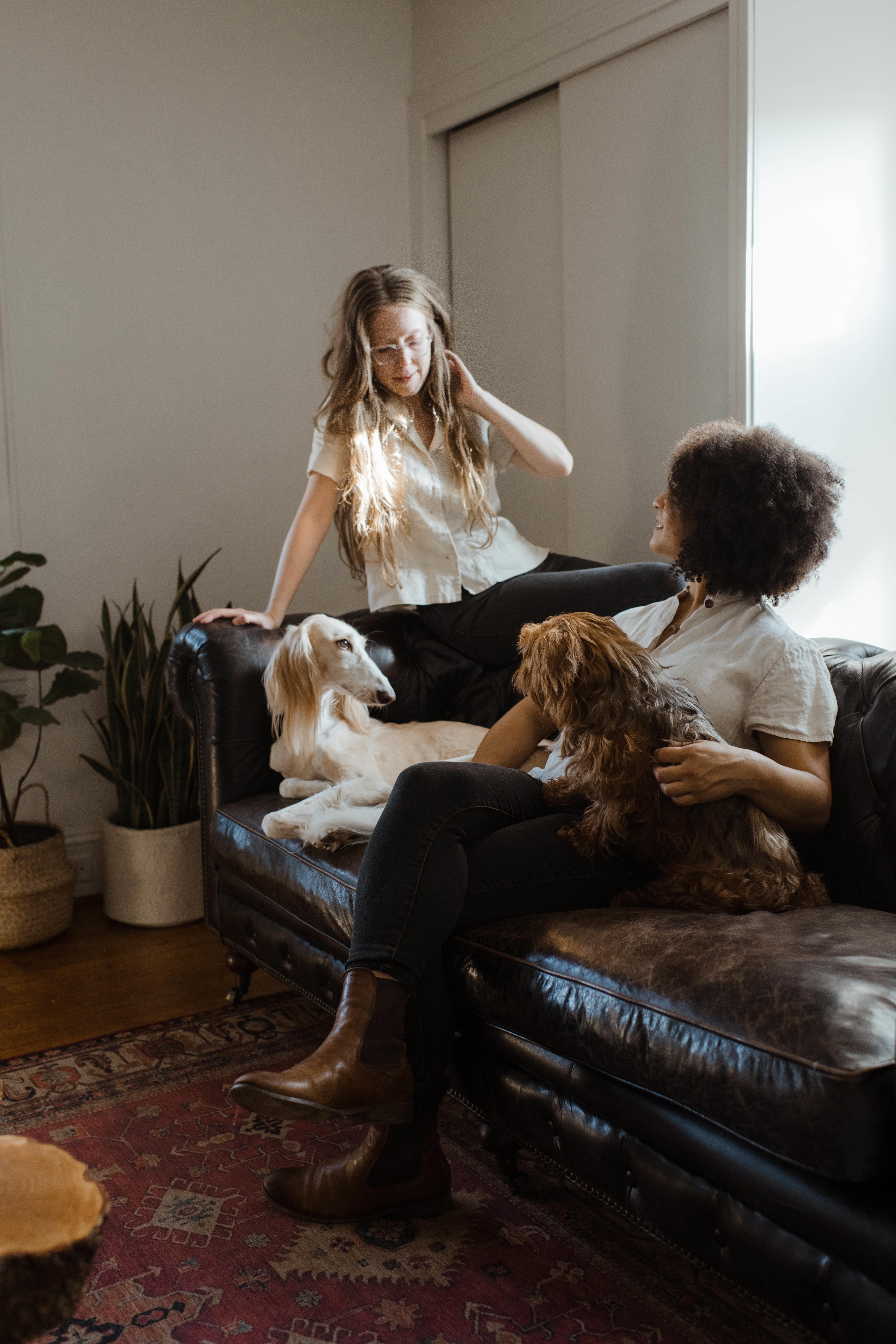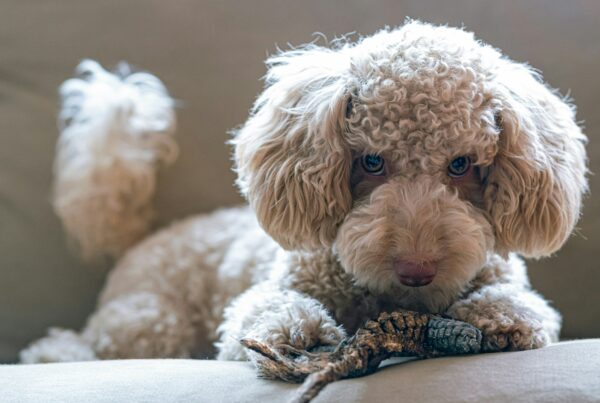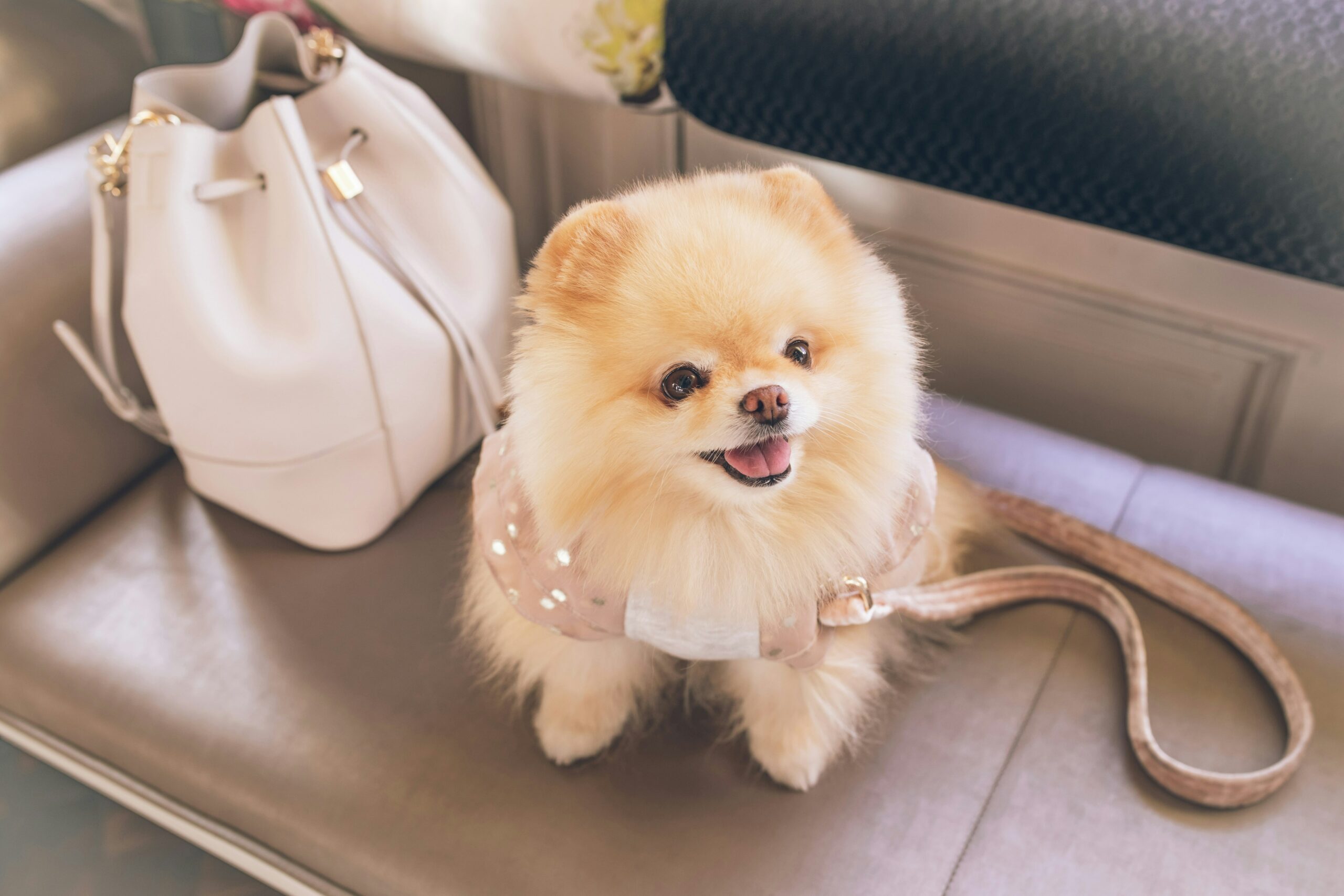Bringing a dog into the family is an exciting time for you. But, regardless of whether your new family member is a puppy or an older dog, understand that they are entering into a whole new environment that is unfamiliar and strange. Learning to trust their humans, accept new belongings, and adapt to a new routine is more challenging than you may realize. Accept that the little guy may take more than a few weeks and possibly, months to adjust and acclimatize. Here’s what you can do to help the process.
Bring Over Some of Their Old Things
 Help your new friend get settled in their new home by bringing over some of their old things from the shelter or previous owners. Ask for a beloved blanket, toy, food, or water bowl even if these items are worn out and bedraggled. Having some familiar objects will help them feel more secure in their new environment. You can always phase them out down the line as they learn to love new toys and bowls.
Help your new friend get settled in their new home by bringing over some of their old things from the shelter or previous owners. Ask for a beloved blanket, toy, food, or water bowl even if these items are worn out and bedraggled. Having some familiar objects will help them feel more secure in their new environment. You can always phase them out down the line as they learn to love new toys and bowls.
Food is another area where you want to make changes gradually. Ask about the brands the little bud likes or has been eating all this time. Keeping their diet consistent will help avoid the risk of an upset stomach. The last thing they’ll need is feeling unwell in a new place. Once your dog has had time to settle in, you can try other foods that better suit your home and lifestyle. Following their previous feeding and walking schedules is also a great way to make them feel more secure.
Segregate an Area to Make the Little Guy Feel Safe

Dogs need the equivalent to a dog den to feel extra safe. Every dog in the wild has a physical space that is covered on every side except the opening to call “home”. Some pet parents give their dog the covered crate option (plastic or wire crates covered with a blanket or sheet) indoors and for outdoors the equivalent is a “dog house”. For dogs that have neither, they generally will find solace under the dining room table, a coffee or side table or even under the couch or bed. If your pet comes with a clothed carrier or tote, they may choose to hide there until they feel its safer to venture out and explore.
As soon as you get home, give your new dog a potty break. Lead them to the designated relieving spot and let them go. Remember to keep the leash and harness on, and reward with praise and a treat to indicate that this is acceptable behavior. Since you can’t be sure of how the little bud will react to their new home, lead them to a gated room or confine them to a pen or crate. Make sure it is large enough to stand up, lie down, and take a few steps comfortably. Give your furry friend time to rest a little and get acquainted with the scents and sounds of your home. If you do let them out, keep the leash on. Placing hand-illustrated dog portraits with their likeness could also make them feel at home.
Restrict New Experiences to One or Two Each Week
Having a strict routine makes dogs feel secure and happy. For this reason, you’ll give the little fella time to adjust to each new experience gradually. That includes meeting the other members of their family. Delegate feeding, walking, grooming, and bathing duties to a single person who’ll spend time with the dog and care for them. Resist the excitement of wanting to bring them lots of new toys made with deep pour resin and treats right away, or they might feel overwhelmed and anxious. Always give the dog time and space when they’re feeding, so you don’t trigger their guarding instincts.
Supervise Introductions and Interactions with Kids Carefully

When you bring the kids to meet the little guy, supervise carefully and keep the dog leashed. Maintain a safe distance until they each know how to behave around the other. Even as you train the dog to adapt into the house, you’ll also instruct the kids on how to respect the animal and handle them gently.
Segregate the New Dog from Other Pets in the House
If you have other dogs, cats, or any other pets in the house, don’t spring surprises on the animals and leave them alone together. Give them time to meet one another in a neutral environment, such as the yard or garden. Keep leashes on both animals and maintain a safe distance until they’re ready to be friends. Also, crate the animals in different sections of your home in the initial few weeks.
Welcoming a new furry friend into your family is an exciting time for everyone. But, remember not to overwhelm the dog and give them lots of time to adjust and get used to your home.
photo cred; https://unsplash.com/photos/Kh-QiVqS9o8
https://unsplash.com/photos/NMuptrEKdOE
charles-deluvio-IL9vpVg6fPE-unsplash
https://unsplash.com/photos/uKRYDke-YsA
Love our content? Share it with a friend or link it to social media. Like short clips of cute household pets? Training tips? Follow us on instagram @nydognanny or on YouTube at nydognanny. Have some news you needs to get to dog and cat parents stat? Email info@newyorkdognanny.com with your article pitch.




